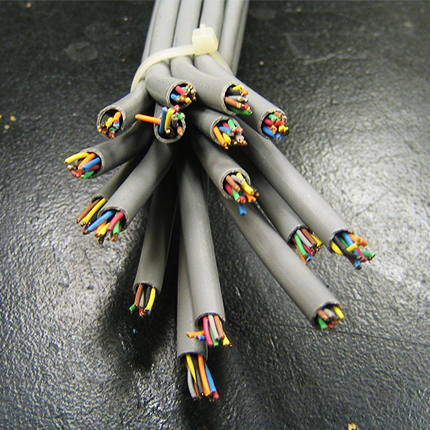I was thinking on buying a 2-4 bay HDD powered enclosure as a NAS for my mini pc, since I already have that, and buying or building a full-fledged diy NAS seems a bit expensive.
I want to hear some opinions from you guys, since it seems using this method is a mixed area from the selfhosted pros. I would be hoping that by using a powered enclosure, that would alleviate or solve the USB port overcharging issue, which have appeared in my mini pc when trying out an external HDD with a normal sata to usb converter.
Did you have any experiences with a setup like this one?
I have the QNAP TL-D800S. It’s an 8 bay DAS but there is also a 4 bay variant. Works well for me. It uses SFF cables to connect to the PC and comes with the appropriate PCIe card which seems more robust to me than anything USB for this.
Yeah this option seems like a more robust option than using an USB one. Unfortunately my mini PC doesn’t offer a sata connection, but thank you for the suggestion!
It would need a PCIe slot, not a SATA connection. But I assume it doesn’t have that either then.
If you use a reputable brand, such as TerraMaster you’ll avoid all of the scare stories you hear.
Almost everything bad seems to be along the lines of
I bought “off brand” XzzYyG from Amazon/EBay/Wish and it failed
Something like this:
https://www.terra-master.com/uk/products/homesoho-das/d6-320.html
It’ll be faster than your spinning rust anyway, as long as you have high speed ports on your mini PC.
such as TerraMaster
The reputable brand that quietly updated my device in the middle of the night and reset my password to a randomly generated one, locking me out of the device? That brand? The brand that runs their OS off of a USB stick inside the device so it’s always a ticking time bomb that might just stop working randomly? That one?
Update your DAS? What are you talking about?
The brand that runs their OS off of a USB stick inside the device
Are you alright?
Bought only the nas hardware, no software or enclosures with OS from the and had no problems
I was very intrigued until they wanted my email before showing me the “Quick Installation Guide”.
Err, you mean the piece of paper that came in the box, or is available to download on their website as a link without having to register?
https://www.terra-master.com/us/d6-320.html?page=menu&mid=1336
No such thing in their website from europe
I just did a websearch and first result was a download link on their US website too which didn’t require registration.
There seems to be a lot of nonsense on here.
I had a setup similar to this for a year or two that ended with an hdd destroying itself one night. Probably because of the drive and not the usb enclosure I was using. Until then it worked fine, it’s definitely a viable route.
If you can swing a desktop pc case it’ll probably end up easier and cheaper and have some headroom for upgrades, that’s the route I went down after trying an escalating series of mini-pcs and running into their limits one too many times.
I built my own and it honestly wasn’t that expensive (at the time back in 2018). I just started with the basics but built it to be expandable. I used a Define 6 case which gave me room for 12 HDDs, a mobo with the highest number of SATA ports, processor, RAM, etc and then just added drives 1-2 at a time as they filled up. My only regret is that I didn’t and still haven’t learned Linux well enough to rely on it because it runs Windows, the PC is showing its age now, and I need to think about the replacement solution and how I’ll be able to migrate 70+ TB of media and all my configurations to the new machine.
If you do run Windows, Drivepool and SnapRAID are useful for pooling everything into a single virtual disk and setting up a software RAID that will protect from drive failures without locking your data away.
You can also use snapraid (and mergefs) on Linux to do the same thing! I’m excited to recognize this because I recently turned an old PC into a crappy nas with Open Media Vault and used these two.
I’ve personally gone with an N100 Mini PC running Proxmox and two of these daisy-chained (purchased on sale). https://www.amazon.com/MAIWO-Enclosure-Cooling-Storage-Expansion/dp/B0D28Q187R/
The MAIWO DAS uses garbage JMicron firmware by default, and there are significant issues with their sleep functions. Because of that, it took me forever to figure out why SnapRAID kept failing mid-sync. Fortunately, new firmware seems to have fixed their issues and they’ve been rock solid ever since. I specifically had to update the firmware for all 4 of the USB controllers on each DAS.
Direct link to firmware that worked for me. https://gbatemp.net/attachments/bin-16028_jms578_std_v00-04-01-04_self_power_odd_20190611-zip.230929/
JMS578_STD_v00.04.01.04_Self Power + ODD.bin
MD5: 7701fb7a968e3ad4ca926dd7854806ff
Firmware updater tool for Windows found here. I ran this from a Virtualbox Windows 10 VM inside my Arch install: https://gbatemp.net/attachments/jmicron-jms578-sata-crystal-enclosure-fwupdate-zip.216335/
FwUpdateTool_v1_19_16_24.exe
MD5: 735ec8d9f99c457ce793739480c55706
Mirrors for posterity:
https://files.catbox.moe/e4121s.zip
https://mega.nz/file/OJAX2KhQ#67kIDJun92nqi56mFur_9vALSi2yTJXXv7ew5pYSJVY
Blog post detailing firmware update procedure for an external drive: https://ralimtek.com/posts/2021/jms578/
Detailed post on JMS578: https://gbatemp.net/threads/how-to-update-firmware-of-jmicron-jms578-usb3-0-sata-enclosure-black-screen-lock-music-stop.569158/
Alternate FOSS software for flashing I found later, but never used. https://github.com/BertoldVdb/jms578flash
It’s viable, but when you’re buying a DAS for the drives, figure out what the USB chipset is and make sure it’s not a flaky piece of crap.
Things have gotten better, but some random manufacturers are still using trash bridge chips and you’ll be in for a bad time. (By which I mean your drives will vanish in the middle of a write, and corrupt themselves.)
I’ve had “trash controllers” in Orico units which rewite the drive details which makes them annoying to work with but I’ve never heard of
your drives will vanish in the middle of a write, and corrupt themselves
That sounds likes its underpowered and when the draw is up the supply can’t handle it, which could happen for internal drives if your supply isn’t up to powering enough drives.
Use a reputable brand like TerraMaster and you’ll not have those sorts of problems.
Seconded. It’s not a bad idea, but it’s another point of failure for sure.
To add on - several of those USB controllers implement stuff in non-standard ways, so if your board fails you either need another one of the exact same model and firmware to read the data off those drives again. It’s very likely if you just bought another DAS/USB controller that the drives/partitions would be unreadable, and you’d have to start over again.
OP, it’s not a bad idea unless you don’t have a backup plan. If you are planning on having no backups, then this is much more risky than just an external hard drive, this could very well lead to complete data loss. If you have a solid backup plan, then go for it! If you don’t, then for the love of god you aren’t ready for it.
Honestly, if you only need a few bays, just look at getting a Synology.
Always have a offside backup for any data you deeply care about it’s never worth he risk.
I am currently getting a replacement for my old win10+drivepool setup using hand me down parts from my old main pc. I decided to go with UNRAID this time and other than a few headaches, its been pretty simple to get going. I am already a big fan of the container/docker/app setup. My setup is 3 12tb seagate iron wolf nas drives recertified/refurbished from ebay, the nvme ssd I used as my prior boot drive as a cache drive, and a r7 1700 and ab350m pro 4 mobo with a pny xlr8 1070gpu. It was mostly free since I was replacing it with a newer gaming build. I think I spent $280 on the hdds?
I use an M1 Mac Mini running Asahi Linux with a USB 3.0 4-bay enclosure. Works great so far.
Consider the machine being on 24/7 and cooling.
Furthermore, depending on the current power supply, you might need to upgrade it to keep everything running.
You may not be able to do RAID or other redundant/performant arrays with USB. You can definitely achieve a big JBOD array but it will be less resilient and slower than a RAID array. Enclosures often don’t cool as well so heat may degrade your disks faster as well. I did this for a while with some old disks and some $30 HDD toasters. I only put data on there I could afford to lose. I wish there was a standalone hardware RAID solution… like a NAS without the network. That would have a huge draw for hobbyists that don’t want to buy an expensive NAS. I’ve searched for this but haven’t found anything. Message me if you know of such a product! Maybe consider building your own NAS with an old PC. Way cheaper than a prebuilt and fun to build! I had an old Dell Optiplex 990 that is now a 32 TB NAS. Had to get a new case but it’s a decent backup to my Synology.
This is completely untrue.
You can get plently of performant arrays over USB. You do know how much USB 3.1 or 4 can transmit?
Enclosures often don’t cool as well so heat may degrade your disks faster as well.
DAS enclosures can do a great job of cooling by separating and not sharing the air inside a single case.
Get a USB-C DAS (enclosure) for your disks, those use their own power supply. Since it is USB-C performance will be very good and stable and you’ll be happy with it.
Get old HP thinclient T510, or Igel M340C. Got a few of those practically free online. Has Via Eden 1.2Ghz 2 core. Not powerful at all. But cold. Mine runs on hot summer days approximately between 40-50C. HP has I think 19V power source, Igel runs on 12V brick.










